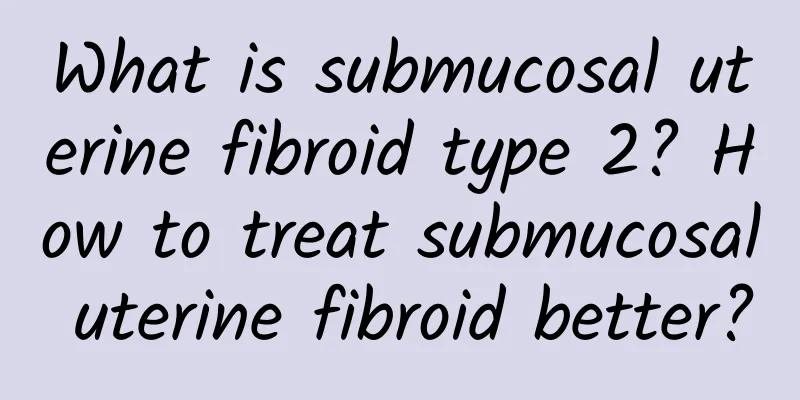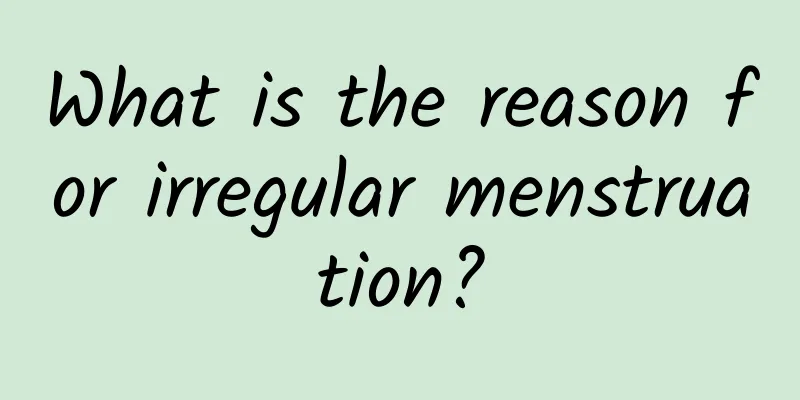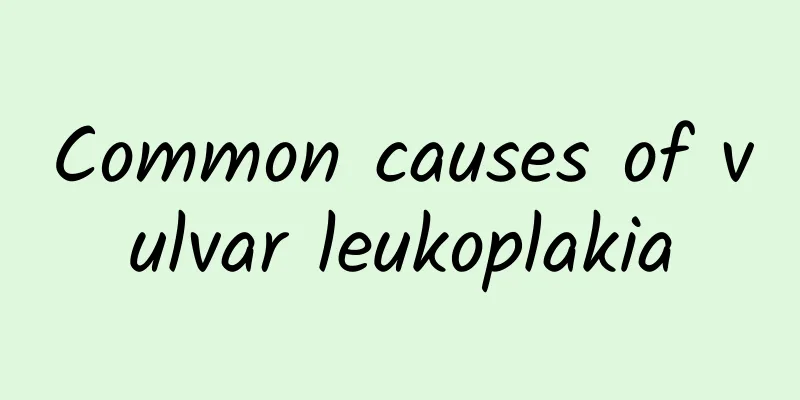What is submucosal uterine fibroid type 2? How to treat submucosal uterine fibroid better?

|
What are submucosal uterine fibroids type 2 and how to effectively treat submucosal uterine fibroids are issues that many women are concerned about. The following will introduce these two issues in detail and explore the best treatment methods. Uterine fibroids are a common gynecological disease. They are benign tumors formed by the growth of muscle cells in the uterine wall. The tumor can appear in any part of the myometrium, including under the endometrium, inside the myometrium, and outside the uterine cavity. Among them, submucosal uterine fibroids are the most common type. 1. What is submucosal uterine fibroid type 2? Submucosal type 2 fibroids are a specific type of fibroid that grows in the lower layer of the endometrium. It is usually single rather than multiple, although there are rare cases where multiple fibroids are found. This type of fibroid is usually smaller and has a significant impact on the menstrual cycle, which can cause problems such as heavy menstruation and prolonged menstruation. 2. Treatment of submucous uterine fibroids Treatment options for submucous uterine fibroids depend on the severity of your symptoms, the size and location of the fibroids, and your personal fertility plans. a. Observation and treatment Doctors will usually recommend observation for small fibroids that are not causing noticeable symptoms. It is very important to have regular checks and monitor the growth of fibroids to make sure they are not causing further problems. b. Drug treatment Medical treatment can help relieve symptoms caused by submucous uterine fibroids, such as pain and irregular menstruation. Commonly used medications include anti-inflammatory drugs, birth control pills, and hormonal medications. However, medical treatment cannot solve the problem of the fibroids themselves, but can only temporarily relieve symptoms. c.Surgery Surgery is the most common method for treating submucous uterine fibroids. Currently, the two most commonly used surgical methods are myomectomy and hysterectomy. Myomectomy is a surgical method that preserves the uterus and is suitable for women who want to have children. Hysterectomy is a surgical method that completely removes the uterus and is suitable for women who no longer plan to have children. During the recovery period after surgery, you need to pay attention to a proper diet and rest, and avoid excessive exertion. 3. Summary Submucosal uterine fibroids type 2 is a specific type of fibroid that is located in the lower layer of the endometrium and often causes problems such as irregular menstruation. The best treatments for submucosal uterine fibroids include observation and treatment, medication, and surgery. For patients with mild symptoms and small fibroids, observation and treatment or medication can be chosen. For patients with severe symptoms or those who want to have children, surgery is the best option. Before treatment, you should consult a professional doctor and choose the most suitable treatment method according to your personal situation to improve the treatment effect. |
<<: What foods can cause uterine fibroids? What foods can cause high uric acid?
>>: What can shrink uterine fibroids and polyps? How can I shrink uterine fibroids?
Recommend
What are the causes of cervical erosion?
In daily life, cervical erosion is a common gynec...
What are the precautions for cervical erosion? What are the precautions for postoperative physical conditioning for patients with cervical erosion?
What precautions should women take in their daily...
To lose weight, you need to supplement with high-quality protein! Mexican-style salad without gaining weight
If you want to have beautiful curves, it is very ...
What medicine can completely cure pelvic peritonitis?
my country's traditional Chinese medicine cul...
What are the diagnostic criteria for uterine fibroids?
Uterine fibroids are a common gynecological disea...
Can watching horror movies in summer help you lose weight? The key to "scare" away the heat is...
In the hot summer, can you lose weight by curling...
Is pelvic inflammatory disease contagious in women?
It is very common for women to suffer from pelvic...
What are the nursing measures for ectopic pregnancy?
Many women have certain psychological fears after...
Ectopic pregnancy may be caused by chronic pelvic inflammatory disease
Ectopic pregnancy may be caused by chronic pelvic...
Check out the four major ways to prevent threatened abortion
Many female friends will encounter many problems,...
Surgical procedures for patients with chocolate cysts
In recent years, more and more women have been su...
Eat good oil and stay away from cardiovascular diseases! Are you eating olive oil correctly? Oil tasters reveal three myths
People who know how to maintain their health, ple...
What is the normal thickness of the endometrium?
The normal thickness of the endometrium varies du...
What are the symptoms of adenomyosis in gynecology
Adenomyosis is mostly diffuse. Due to unclear bou...
Can Traditional Chinese Medicine Treat Miscarriage?
It is a misfortune for women to have a miscarriag...









